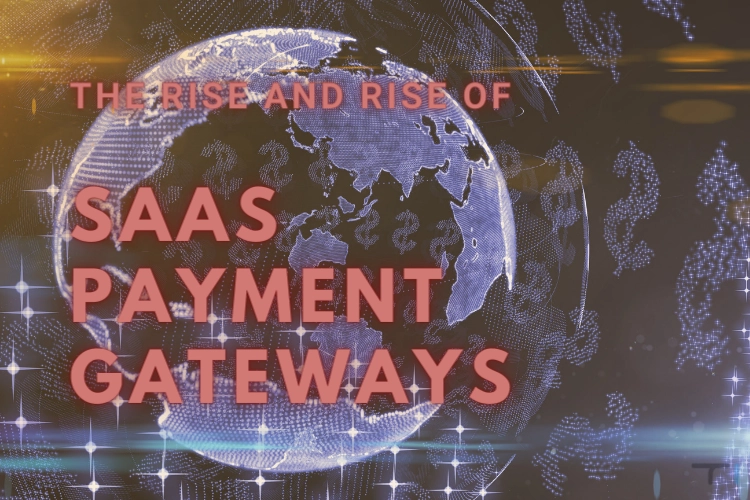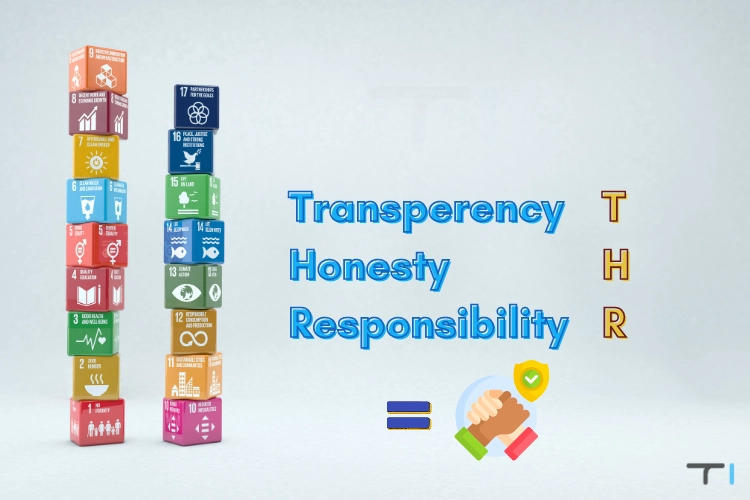There once was a CEO of a trendy new SaaS payment platform named Bill. Now, Bill was a tech whizz, but when it came to understanding the psychology of trust in online payments, he was as lost as a ball in high weeds. One day, Bill decided to test out his own platform by paying his lawyer (an unexpected ‘benefit’ of his recent, rather public divorce). He hit a snag – his payment got stuck in the cyber void.
Bill, desperate, called his tech team, “I’ve got more glitches here than a 1980’s space invaders game!” he cried. His CTO calmly explained they were updating the system for a better user experience. “Better experience?” howled Bill, “I’m having a better experience every time I step on a Lego barefoot!”
The next day, Bill tried again. This time, his payment went through, but it ended up in the account of a local kindergarten. The kindergarten, thinking it was a generous donation, immediately invested in a lifetime supply of crayons.
When Bill found out, he threw his hands up, “Why on earth would I want to fund crayons?” His PA shrugged, “Well, you did say you wanted to support education payments…”.
Ultimately, Bill’s misadventures led him to realise the importance of trust in online payment gateways – especially when it comes to divorces and kindergarten art supplies. And his platform? Let’s just say it’s now as smooth as a dolphin’s backside, and Bill, he’s laughing all the way to the bank – the traditional one, mind you.
Contents
- 1 Trust: The Invisible Currency of Online Transactions
- 2 The Rise and Rise of SaaS Payment Gateways
- 3 User Experience: The Good, The Bad, and The Ugly
- 4 Trust: The Heart and Soul of Online Transactions
- 5 Secure and Reliable Payment Platforms: The Need of the Hour
- 6 User Skepticism and Budget Woes: The Two-Headed Monster
- 7 The Wrap-Up
- 8 The Next Step
- 9 FAQs
Trust: The Invisible Currency of Online Transactions
Listen up, Technicali Guys! We are deep in the internet age, where buying and selling goods online was a novelty, but now it is an everyday occurrence. Behind these transactions lies a complex and usually hidden element -> trust.
Today, it’s time to accept that trust is the currency of digital transactions.
Payment platforms are no longer just about convenience; they must also ensure trust between customers and sellers. This often requires a deep understanding of consumer psychology and behaviour. If payment platforms want to stay relevant, they must ensure they have a firm grasp of trust and security for online transactions.
Now, let’s fast forward to the world of tomorrow.
IOT? Chatbots? Blockchain? AI? AR? Oh, Coming Up next: Sentient robots, only if technology can’t be stopped. And here, trust has become the new gold.
It’s the foundation of all online transactions, and boy, It is crucial!
We will dive deep into this trust business and how it plays out in SaaS Payment Gateways.
So, buckle up and get ready for a wild ride.
Sneak Peek
We will navigate through the evolution of SaaS Payment Gateways, the importance of user experience, the nitty-gritty of trust in online transactions, the need for secure and reliable payment platforms, and ways to tackle user scepticism and budget woes.
The Rise and Rise of SaaS Payment Gateways

SaaS Payment Gateways are the unsung heroes of the digital revolution. These platforms make online transactions as easy as pie, and they’re becoming the cornerstone of modern business.
The rise of SaaS Payment Gateways has been phenomenal, but what makes them so popular?
From mom-and-pop stores to multinational corporations, everyone’s jumping on the Payment Gateway bandwagon. It’s not just a trend or necessity: it’s the future!
Understanding the Psychology of Trust in Online Payments
In the digital landscape, trust is a two-way street. People tend to shy away from businesses that seem alien or complicated. Therefore, for Payment Gateways, it’s essential to cultivate an environment of familiarity and transparency. They must offer an easy-to-use platform and be upfront about their security protocols and practices.
Let’s peel back the layers to understand its inner workings.
It’s not just about having a fancy logo or a catchy slogan; it’s about bridging the gap between the technicalities and the end user.
- Prioritise User Experience: The design and functionality of your payment platform play a crucial role in building trust. It should be easy to navigate, fast, and intuitive. Users are more likely to trust and stick with a platform that offers a seamless experience.
- Transparency is Key: Be open about your security measures and policies. This includes providing detailed information about data storage, encryption methods, and how you handle breaches. The more transparent you are, the more likely users are to trust your platform.
- Educate Your Users: People fear what they don’t understand. Take the time to explain complex security measures in simple terms. Offer resources that educate users about online payment security and fraud prevention.
- Offer Multiple Payment Options: Providing a variety of secure payment options gives users the freedom to choose their preferred method, which can increase trust and conversion rates.
- Provide Excellent Customer Support: Quick and helpful customer support can reassure users and build trust. Make sure there are easy ways for users to get in touch if they encounter issues or have questions.
- Showcase Certifications and Partnerships: Displaying security badges, certificates and highlighting partnerships with trusted entities can reassure users about the legitimacy and security of your platform.
- Request and Showcase User Reviews: Positive reviews from satisfied customers can significantly boost the trustworthiness of your platform. Encourage users to leave reviews and prominently display them on your site.
- Stay Updated and Compliant: Regularly update your platform to include the latest security features. Also, ensure your platform is compliant with local and international payment regulations.
- Protect Against Fraud: Implement robust fraud detection and prevention mechanisms to protect your users. This not only safeguards their financial information but also boosts their trust in your platform.
- Communicate Regularly with Users: Regular communication through newsletters or updates can keep users informed about any changes or improvements in your security measures, further enhancing their trust.
User Experience: The Good, The Bad, and The Ugly
The Ingredients of Good UX

User Experience (UX) is the magic potion that can make or break a Payment Gateway. It’s all about being easy to use, intuitive, fast, and efficient. Look at PayPal or Stripe; their user-friendly design is their secret weapon. I know we shouldn’t judge a book by its cover, but oh, naive me.
Crafting the Perfect User Experience: A Recipe for Success
- Simplicity is Sophistication: Keep your interface clean and straightforward. Avoid cluttering the screen with unnecessary elements. Stick to the essentials and make sure each element serves a purpose.
- Speed is Key: Ensure your platform performs tasks quickly. Slow loading times can frustrate users and lead them to abandon the transaction.
- Intuitive Navigation: Design your platform in such a way that users can easily find what they’re looking for. This includes clear labelling, logical flow, and easy-to-find buttons.
- Consistency: Maintain consistency across all pages in terms of font, colour scheme, button styles, etc. This not only enhances the aesthetic appeal but also aids in navigation.
- Feedback Mechanism: Provide immediate feedback to user actions. If a user makes a payment, confirm it instantly with a message or an email notification.
- Error Handling: If errors occur, the system should clearly communicate what went wrong and offer suggestions to fix it.
- Mobile Optimisation: With the increasing use of mobile devices, ensure your platform is optimised for mobile viewing and interaction.
- Accessibility: Your platform should be accessible to everyone, including people with disabilities. This means using larger fonts, high-contrast colours, and providing alt text for images.
The UX Hall of Fame
Let’s talk about Square. Its simple interface, quick navigation, and speedy transactions make it a dream for businesses and easy to use for customers. It’s the gold standard for UX in Payment Gateways. I mean, it’s so good that it shouts out to users and says: “Hey, here I am! Look at me!”
Taking Inspiration from the Best: Square’s UX Masterclass
- Simple Interface: Square’s interface is straightforward and uncluttered, making it incredibly easy for users to navigate.
- Quick Navigation: The platform ensures users can perform tasks swiftly without jumping through hoops.
- Efficient Transactions: Square speeds up transactions by saving user information securely, reducing the need for repeated data entry.
- User Engagement: Square engages its users with regular updates, personalised offers, and a robust customer support system.
- Security Measures: Square reassures users about their data’s safety by being transparent about its security measures and compliance standards.
- Integration Capabilities: Square seamlessly integrates with other business tools, providing added convenience to its users.
By incorporating these strategies, Payment Gateways can significantly enhance their user experience, cultivating trust and loyalty among their users.
Trust: The Heart and Soul of Online Transactions

Trust in the Digital Jungle
In the untamed landscape of the internet, trust is your trusty compass. It’s the magic dust that entices users to engage with your platform and keeps them hooked. But be warned, it’s a fine line to tread: overdo it, and you risk exposing your users to fraud; underplay it, and they won’t touch your platform with a barge pole.
The Building Blocks of Trust: Not for the Faint-Hearted
Crafting a trustworthy online payment platform isn’t just about throwing in some fancy security measures. It’s about understanding the user’s mind, addressing their fears and meeting their expectations. It’s about providing a user experience that makes them feel valued and secure. For instance, being upfront about pricing can help build trust because nothing irks a customer more than hidden costs.
The Domino Effect of Trust
The Trust Theorem
Trust is the puppet master pulling the strings of user behaviour. The Social Exchange Theory sums it up perfectly: users will stick around if they believe the rewards outweigh the risks. And guess what’s at the centre of it all? Trust.
Trust as Your Secret Growth Elixir
Trust can be the secret potion that drives growth for online payment platforms. If users trust a platform, they’re likely to stick around, use it regularly, and even become brand ambassadors, recommending it to others.
The Dance of Trust and User Engagement
Trust and user engagement are partners in a delicate dance. A high level of trust leads to increased user engagement, while active users further bolster trust in the platform.
Trust in Action: Lessons from Amazon’s Trust-Building Playbook
Let’s look at Amazon. Their reliable service and top-notch security have earned them a massive user base. Trust, my friends, is the secret ingredient of their recipe for success. It’s what makes them stand out from the crowd and inspires users to come back for more.
- Consistent and Reliable Service: Amazon has built a reputation for delivering products on time and handling returns and refunds efficiently. This dependability builds trust as customers know they can rely on the service.
- Customer-Centric Approach: Amazon is known for its focus on customer satisfaction. From user-friendly website design to prompt customer service, all aspects of the business are designed with customer satisfaction in mind.
- Transparency: Amazon provides detailed product descriptions, customer reviews, and seller ratings to help customers make informed decisions. This transparency fosters trust as customers feel they have all the information they need to make a purchase.
- Security Measures: Amazon uses robust security measures to protect customer data. This commitment to security reassures customers that their personal and financial information is safe.
- Leadership Principles: One of Amazon’s leadership principles is “Earn Trust.” Leaders strive to listen attentively, speak candidly, and treat others respectfully, thereby building a culture of trust.
- Quality Assurance: Amazon works hard to ensure that all products sold on its platform meet specific quality standards. This commitment to quality assures customers that they will receive good value for their money.
The Numbers Don’t Lie: Trust’s Impact in Black and White
Let’s take a moment to discuss this PwC survey. An impressive 87% of business leaders believe their customers trust them completely. However, the reality is somewhat different – only around 30% of customers share this sentiment. Quite a discrepancy, wouldn’t you say?
This significant gap isn’t just a minor issue. In fact, it’s a substantial divide that businesses need to address promptly. They must make an effort to foster genuine trust. No more illusions or deceptive practices.
Here’s why this is so important. The survey reveals how trust influences your customers and your employees. An astonishing 71% of your workforce would contemplate leaving if they lost trust in your company. Interestingly, the same percentage of customers would reanalyse spending money on companies they don’t trust.
Trust isn’t just a desirable attribute; it maintains customer loyalty and prevents your employees from seeking opportunities elsewhere.
- Trust: The MVP of SaaS Payment Gateways
- Trust: Build It, and They Will Come

Trust is not a commodity; it’s a commitment. It’s about being Transparent, Honesty and Responsible. If it’s hard to remember these 3 factors, try to imprint them in your mind now. Come on, Let’s repeat.
SaaS Trust is Transparency, Honesty, and Responsibility.
It is THR, HRT, RTH, make some more combination but don’t forget it. THR comes by providing top-notch security and always being there for your users. That’s how you build any SaaS.
The Trust Titans
Square and PayPal are the poster children for trust in the world of SaaS Payment Gateways. Their stellar performance, unwavering customer support, and robust security measures have won the trust of millions. Please Trust Them; they are transparent with their fees, which fosters honesty from all parties; they take responsibility for securing your money and are quick to move with the security measures. Building Trust isn’t just nice to have; it’s a must-have for success in a digital world.
*Cough* FTX *Cough*
Secure and Reliable Payment Platforms: The Need of the Hour
Security: The Ghost in the Machine

- The Dark Side of Online Payments
Here’s the deal, my friends. Online payments are a double-edged sword. On one side, you’ve got the sweet, sweet convenience; on the other, you’re always one step away from the boogeyman of fraud. Identity theft, phishing, credit card fraud – these are the spectres that haunt our online transactions.
- The Art of Cybersecurity
Alright, let’s get down to brass tacks. How do you fight these online ghouls?
With encryption, two-factor authentication, and regular security audits.
That’s right; you’ve got to fight fire with fire.
Reliability: The Unsung Hero

- The Lowdown on Reliability
Reliability is like the drummer in a rock band – always in the background, but without them, the whole gig falls apart. Users need to know that their transactions will go through smoothly, come rain or shine.
- The Reliable Roster
Now, let’s give a big round of applause for Stripe and Square. These guys are the rock stars of reliability. They’ve got the speed, accuracy, and uptime that businesses dream of.
User Skepticism and Budget Woes: The Two-Headed Monster

The Security Showdown
Dealing with user scepticism about security is like trying to tame a wild horse. It’s a tough job, but someone’s got to do it! And guess what? That someone is you. You need to show your users that their security is your top priority. How do you do that? By being transparent about your security measures, keeping your users updated about any changes or upgrades, and acting swiftly in case of any security breaches.
Building a Security Fortress
Implementing robust saas security measures is the first step towards building trust. This includes using advanced encryption methods for data protection, employing multi-factor authentication for access control, and adhering to global privacy regulations.
Transparent Communication: Your Secret Weapon
Being transparent about your security measures can help win over sceptical users. Provide them with easy-to-understand information about how their data is protected and how they can enhance their security while using your platform.
Swift Action in Case of Breaches
If a security breach does occur, swift action is crucial. This involves not just fixing the issue but also communicating with the users about what happened, what you’re doing to rectify it, and what measures are being taken to prevent such incidents in the future.
The Budget Balancing Act: Quality Services Without Breaking the Bank

Hey, who said you’ve got to break the bank for top-notch services? There are plenty of Payment Gateways offering first-class services that won’t leave your pockets empty. Tiered pricing models are all the rage these days, giving businesses the flexibility to pick what suits their budget.
The Rise of Tiered Pricing Models
Tiered pricing models are becoming increasingly popular these days. They offer businesses the flexibility to choose a plan that suits their needs and budget. Whether you’re a small startup or a large corporation, there’s a plan out there that’s just right for you.
Getting the Most Bang for Your Buck
To get the most value for your money, look for a payment gateway that offers a mix of essential features like robust security, seamless integration, excellent customer support, and competitive transaction fees. Remember, the cheapest option isn’t always the best. It’s about finding a service that offers the best balance of cost and quality.
Negotiating Better Deals
Don’t be afraid to negotiate for better deals. Many payment gateways are willing to offer discounts or special packages for businesses based on their specific needs or transaction volumes. So, put on your negotiation hat and get ready to strike a deal!
The Wrap-Up
When the curtains close, what stands out is that trust is the pulsating heart of online transactions. A sterling user experience, impenetrable security, and dependable services are the trinity that helps businesses earn this trust. But let’s not forget our SaaS metrics here.
A low churn rate, a key SaaS metric, is often a testament to high user trust. It tells you that users aren’t just making one-off purchases but are sticking around for the long haul. They’re coming back for more, and that’s not because they’ve got nowhere else to go. It’s because you’ve built a relationship with them, a relationship founded on trust.
Remember, in the realm of online payment platforms, clinching a sale is just the opening act. The real showstopper is building a lasting relationship. And trust my friends, is your ticket to that show.
The Next Step
Alright, Tech folks, we’ve reached the end of the line. But for you, this is just the beginning. If you are building SaaS related to payments, make sure to build strong with payment gateway trends, which include integrating the Future like Blockchain Transactions, Buy Now Pay Later, and Transactions that will happen in AR/VT *cough* *cough* Apple Vision Pro. Take these insights, put them to work, and watch the magic unfold. Remember, knowledge is power, and in the digital world, it’s your most potent weapon.
FAQs

1. Why is trust important in online transactions?
Trust, my friends, is the engine that powers online transactions. It’s what keeps the wheels turning and businesses thriving.
2. What role does user experience play in Payment Gateways?
User experience is the secret sauce that gives a Payment Gateway its zing. It’s what makes users go, “Hey, this is easy. I like it!” plus, it minimised the thinking, aka financial planning, out of mind. Isn’t it great to just put a thumb and *cha-ching* “$$ has been debited from your Apple Pay” You don’t even have to think about your password. Just put your finger or smile on your face.
3. What are some strategies to build trust in Payment Gateways?
Building trust is like building a fortress. It takes transparency, robust security measures, and top-notch customer service. These are the bricks in your trust fortress.
4. How can Payment Gateways address user scepticism about security?
Communication, folks, is vital. Keep users in the loop about your security measures, address their concerns in a jiffy, and have detailed documentation to share and videos to point to; basically, always keep things transparent.
5. What are some budget-friendly Payment Gateway options?
Plenty of Payment Gateways offer tiered pricing models. It’s like a buffet – you pick what fits your business and your budget. Stripe and Square are some of the top dogs in this department.
Remember, in the world of online transactions, trust is everything. Keep your UX top-tier, your security tighter than Fort Knox, and your services reliable; you’ll have users eating out of your hand. It’s not just about making the sale but about building lasting relationships.
This is your journey, my friend. Take these nuggets of wisdom, put them to work, and watch as your online transactions flourish. Because in the digital world, knowledge isn’t just power – it’s your secret weapon.


